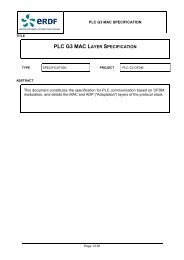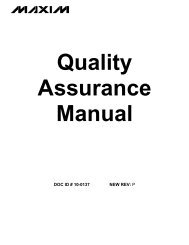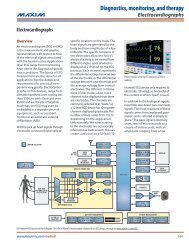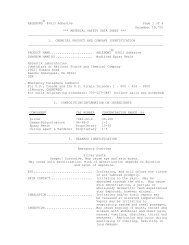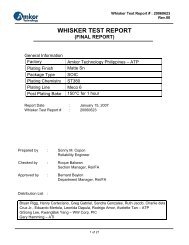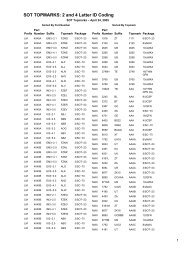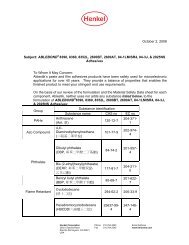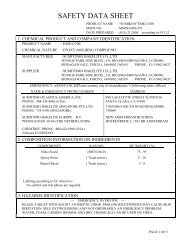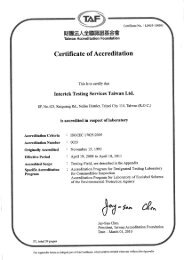MAXQ Core Assembly Guide - Maxim
MAXQ Core Assembly Guide - Maxim
MAXQ Core Assembly Guide - Maxim
You also want an ePaper? Increase the reach of your titles
YUMPU automatically turns print PDFs into web optimized ePapers that Google loves.
<strong>MAXQ</strong> <strong>Core</strong> <strong>Assembly</strong> <strong>Guide</strong>Since the DB statement may be used to generate either odd or even numbers of bytes in the hex file, it has thepotential of introducing word-alignment issues. To avoid this, the assembler automatically ensures that the hexdata output is padded to the next word boundary (if necessary) following each DB statement.This means that the codedb 11hdb 22hdb 33hwill produce a total of six bytes: 11h, FFh (padding byte), 22h, FFh (padding byte), 33h, FFh (padding byte), whilethe codedb 11h, 22h, 33hwill only produce four bytes: 11h, 22h, 33h, FFh (padding byte), since the padding is performed following each lineof the source code. The padding bytes always have the value FFh. For the code example, listed above, the hexoutput (with padding bytes underlined) would be::020000040000FA:1000000000FF6565FFFF01FF0055FFFF41FF414213:0E001000537472696E672E00415A273B2324F9:00000001FFNote that the padding bytes are not shown in the list file. The padding byte is always the most significant byte ofthe program memory word.Version 1.2 16 of 43 March 7, 2007




